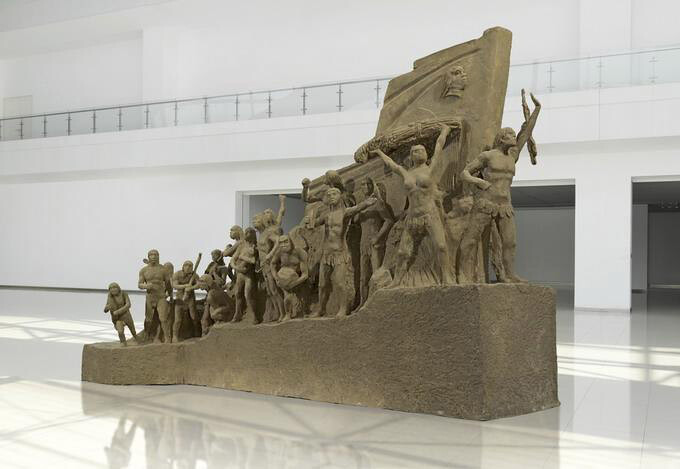MadeIn is a cultural production company founded a year ago by the Chinese experimental artist Xu Zhen. He founded the company in an attempt to define and combine his various outputs beyond his own artwork, such as the non-profit space BizArt, China’s leading online contemporary art forum Art-Ba-Ba (which translates as “art daddy” or “art shit” depending on the tones of “ba-ba”), and his curatorial work. By branding everything he does like some Hollywood studio, he hides his own identity behind a corporate façade. But we still know it’s him behind the mask. His corporate identity has added an extra layer of signification to his work: it’s a matter of representation, of how we signify what we see.
The exhibition “Don’t Hang Your Faith on the Wall” is an extension of this fundamental attitude towards representation. The show consists of installation, sculpture, and two-dimensional works each with a title taken from philosophy or the media. The original works, however, were not shown. Instead, the works were photographed and these photographs are presented as the ultimate art objects of the show. The exhibition contributes to the discussion of what constitutes an artwork as examined by Walter Benjamin in “The Work of Art in the Age of Mechanical Reproduction” and by many scholars since. Boris Groys, referring to Benjamin’s article in the chapter “Art in the Age of Biopolitics: From Artwork to Art Documentation” from his book Art and Power, described the difference between the original artwork and its representation when he wrote “Art documentation is by definition not art; it merely refers to art, and in precisely this way makes it clear that art, in this case, is no longer present and immediately visible but rather absent and hidden.” MadeIn makes a direct and substantial challenge to Groys’s statement. When contemporary artistic production has increased to the extent that a vast majority of artworks can only be seen and understood from reproductions on websites and in magazines, MadeIn asks what actual difference remains between the artwork and its representation. By deliberately cancelling out the divide between the two categories, MadeIn categorically states that art has no more “aura.”
It is significant that this new argument in the theory of representation comes from the peripheries, rather than from the traditional centers of modern and contemporary artistic production—Europe and the US. Xu Zhen has a fear of flying, which means he cannot travel to Europe or the US to see the original masterworks of modern and early contemporary art. This lack of access is symbolic of most artists living around the world within the globalized contemporary platform. If one can only understand a work by seeing the original and by being exposed to its “aura,” then what does it mean for thousands of artists around the world who do not have such access?
The implications of MadeIn’s project don’t stop here. Things become even more interesting when thinking about how such work is represented in print media or the web. There will be no way of knowing that the actual artwork is its documentation. It cancels itself out, both in form and in concept.

